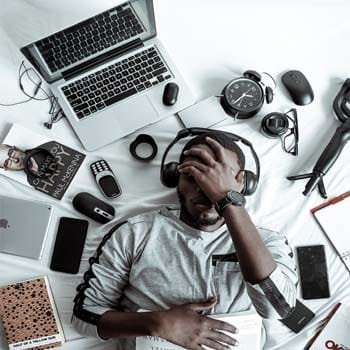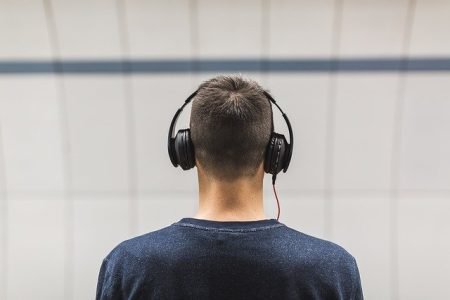
Introduction to Bluetooth Headphones Connection Issues
Bluetooth headphones are great for listening to music or making calls without wires. But sometimes, they don’t connect as they should. This can be very frustrating. Let’s look at some common reasons why this happens and how to fix it.
- Understanding the common causes of pairing problems: There are many reasons why your Bluetooth headphones might not pair with your device. It could be due to interference, low battery, or outdated software. Knowing these causes can help you solve the problem faster.
- Why your Bluetooth headphones won’t connect: Sometimes, your headphones might not connect at all. This could be because they are too far from the device, or there might be too many devices trying to connect at once. Understanding these issues can help you get back to enjoying your music or calls.
Understanding Bluetooth Connection
What is Bluetooth?
Bluetooth is a type of wireless technology. It helps devices connect without using wires. Many people use Bluetooth every day. Let’s learn more about it.
- Bluetooth is the most widely used wireless technology: Bluetooth is very popular. It is used in many devices like phones, headphones, and speakers. Over 4 billion Bluetooth devices are used worldwide. This makes it the most common wireless technology.
- How Bluetooth features work in wireless devices: Bluetooth uses radio waves to connect devices. It can work over short distances, usually up to 30 feet. When you pair two devices, they can share information. For example, you can play music from your phone on a Bluetooth speaker.
| Feature | Explanation |
|---|---|
| Range | Up to 30 feet |
| Devices | Phones, headphones, speakers, and more |
| Usage | Connecting devices wirelessly |
Bluetooth makes life easier. You can connect devices without messy wires. It is simple and fast. Many people enjoy using Bluetooth every day.
How Bluetooth Pairing Works
- First-Time Pairing ProcessWhen you pair a Bluetooth device for the first time, it’s called “pairing.” This process allows your device to connect to another device wirelessly. Here’s how it works:
- Turn on Bluetooth on both devices. Make sure the devices are close to each other. One device will search for available Bluetooth devices. Select the device you want to pair with from the list. Confirm the pairing request if prompted.
- Subsequent Device Pairing ProcedureAfter the first pairing, connecting again is simple. Here’s what you need to do:
- Turn on Bluetooth on both devices.
- Make sure the devices are within range.
- Select the device from the list of paired devices.
- The devices will connect automatically.
- Second-Time Pairing and Multipoint ConnectionSometimes, you may want to connect to more than one device at the same time. This is called a multipoint connection. Here’s how it works:
- Turn on Bluetooth on all devices.
- Pair each device one by one.
- Make sure each device is within range.
- Select the devices from the list of paired devices.
Common Bluetooth Issues and Solutions
Bluetooth Accessory Isn’t Detected by Your Android Device
Sometimes, your Android phone might not detect your Bluetooth accessory. Here are some steps to help you fix this issue:
- Checking Bluetooth settings on your Android phone: Ensure that Bluetooth is turned on. Go to Settings > Bluetooth and toggle the switch to the “on” position. Also, make sure your phone is visible to other devices.
- Ensuring your Bluetooth accessory is in pairing mode: Most Bluetooth accessories need to be in pairing mode to connect. Check the manual for your accessory to see how to activate pairing mode. Usually, this involves holding down a button until a light starts flashing.
- Resetting your Bluetooth accessory to factory settings: If your accessory still isn’t detected, try resetting it to factory settings. This can often resolve connection issues. Refer to the accessory’s manual for instructions on how to reset it.
| Step | Action | Details |
|---|---|---|
| 1 | Check Bluetooth settings | Ensure Bluetooth is on and your phone is visible. |
| 2 | Pairing mode | Put your accessory in pairing mode. |
| 3 | Reset accessory | Reset to factory settings if needed. |
Bluetooth Headphones Won’t Connect to Windows PC
- Checking Bluetooth Settings on Your Windows PC: First, make sure Bluetooth is turned on. Go to Settings > Devices > Bluetooth & other devices. Ensure the switch is set to On. Next, check if your headphones are listed under Audio. If not, click Add Bluetooth or other device and follow the instructions to pair your headphones.
- Updating the Operating System and Bluetooth Drivers: Outdated software can cause connection issues. To update your system, go to Settings > Update & Security > Windows Update and click Check for updates. For Bluetooth drivers, open Device Manager, find Bluetooth, right-click your Bluetooth adapter, and select Update driver. Follow the prompts to complete the update.
- Resetting the Bluetooth Pairing Information on Your PC: Sometimes, resetting the pairing information can help. Go to Settings > Devices > Bluetooth & other devices. Find your headphones, click on them, and select Remove device. After removing, restart your PC. Then, try pairing your headphones again by clicking Add Bluetooth or other device and following the instructions.
| Step | Action | Details |
|---|---|---|
| 1 | Check Bluetooth Settings | Ensure Bluetooth is on and headphones are listed under Audio. |
| 2 | Update Software | Update Windows and Bluetooth drivers to the latest versions. |
| 3 | Reset Pairing Information | Remove and re-pair your headphones. |
Preventing Future Bluetooth Connection Issues
Maintaining Your Bluetooth Headphones
To keep your Bluetooth headphones working well, it’s important to take good care of them. Here are some tips:
- Keeping your headphones’ firmware up-to-date: Firmware is the software that runs your headphones. Manufacturers often release updates to fix bugs and improve performance. Check the manufacturer’s website or app regularly for updates. Updating firmware can prevent many connection issues.
- Properly charging and storing your wireless headphones: Always use the charger that comes with your headphones. Overcharging can damage the battery. Store your headphones in a cool, dry place. Avoid leaving them in hot or humid areas, like a car on a sunny day. Proper care can extend the life of your headphones and keep them working well.
| Tip | Why It’s Important |
|---|---|
| Update Firmware | Fixes bugs and improves performance |
| Use Original Charger | Prevents battery damage |
| Store Properly | Extends headphone life |
Optimizing Your Device’s Bluetooth Settings
- Managing Paired Devices – To keep your Bluetooth working well, it’s important to manage your paired devices. Over time, you might connect many devices to your phone or computer. Too many connections can cause problems. Start by checking your device’s Bluetooth settings. Look for a list of paired devices. Remove any devices you no longer use. This can help improve your Bluetooth performance.DeviceLast ConnectedWireless HeadphonesYesterdayBluetooth SpeakerLast WeekOld Phone3 Months AgoAs shown in the table, it’s a good idea to keep track of when you last used each device. If you haven’t used a device in a while, consider removing it from the list.
- Adjusting Bluetooth Performance – Settings Another way to optimize your Bluetooth is by adjusting performance settings. Many devices have options to improve Bluetooth performance. These settings can help reduce connection issues. For example, some devices allow you to prioritize connection stability over audio quality. This can be useful if you often experience dropped connections. Check your device’s manual or settings menu for these options. Adjusting them can make a big difference in your Bluetooth experience. Example: On some smartphones, you can find these settings under “Advanced” in the Bluetooth menu. Look for options like “Optimize for Audio Quality” or “Optimize for Connection Stability.”
Conclusion: Ensuring a Smooth Bluetooth Experience
- Recap of Bluetooth Connection and Troubleshooting Tips
Connecting Bluetooth headphones can sometimes be tricky. Here are the key points to remember:
- Make sure your headphones are in pairing mode.
- Check if Bluetooth is turned on in your device settings.
- Keep devices close to each other during pairing.
- Restart both devices if the connection fails.
- Update the software of your devices regularly.
These steps can help you connect your Bluetooth headphones smoothly.
- Final Thoughts on Maintaining a Stable Bluetooth Connection
To keep your Bluetooth connection stable, follow these tips:
- Keep your devices within the recommended range.
- Avoid obstacles like walls and large objects.
- Minimize interference from other electronic devices.
- Regularly clean your headphones and device ports.
By following these tips, you can enjoy a seamless Bluetooth experience.
| Tip | Action |
|---|---|
| Pairing Mode | Ensure headphones are in pairing mode |
| Bluetooth On | Check device settings |
| Device Proximity | Keep devices close during pairing |
| Restart Devices | Restart both devices if needed |
| Software Updates | Update device software regularly |
| Range | Keep devices within recommended range |
| Obstacles | Avoid walls and large objects |
| Interference | Minimize interference from other electronics |
| Clean Devices | Regularly clean headphones and ports |
By following these guidelines, you can ensure a smooth and stable Bluetooth connection. Happy listening!



